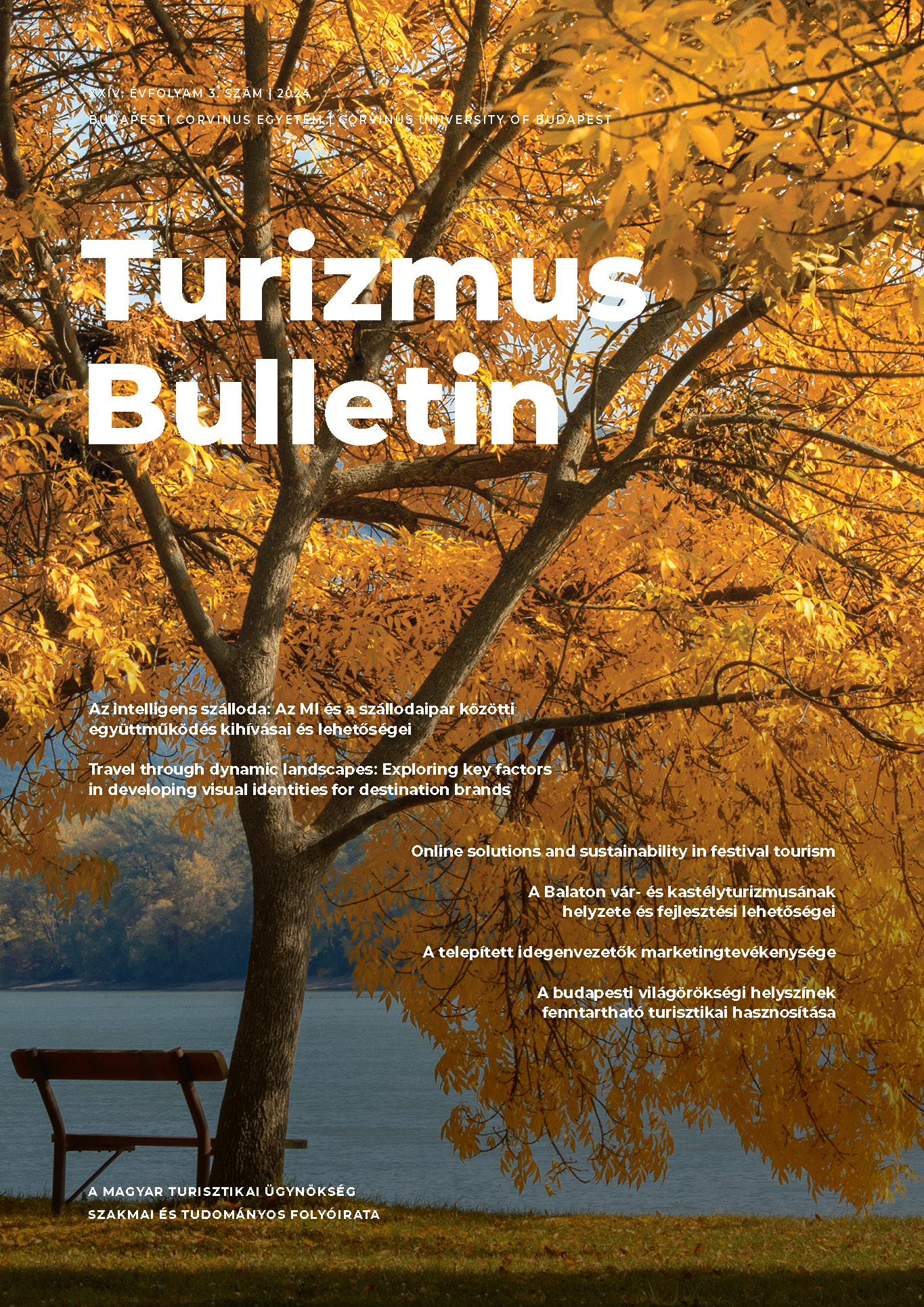Utilizing Budapest’s World Heritage Sites as sustainable tourism locations
DOI:
https://doi.org/10.14267/TURBULL.2024v24n3.6Keywords:
world heritage, Budapest World Heritage Site, sustainable tourism, interpretationAbstract
Among the Hungarian UNESCO World Heritage Sites, the author places the examination of the Budapest World Heritage Sites at the center of her research. This focuses on how, and in what form the principles of sustainable tourism are realized at the World Heritage Sites in Budapest. To establish the basis for the examination of the above issues, eight semi-structured interviews were conducted with representatives of the organizations responsible for the management of these sites. During the period of the analysis the gradual return to the pre-pandemic level of tourist traffic predicted that overtourism will return to World Heritage Sites. This could threaten the aspects of sustainability. In this situation, it is necessary to use effective visitor management tools – e.g. optimizing traffic patterns, using effective tools to present attractions and improving the quality of life of the population – which the surveyed World Heritage Sites in Budapest have initiated and have been taking serious steps to implement and organise.
References
FEKETE M. (2006): Hétköznapi turizmus: A turizmuselmélettől a gyakorlatig. Doktori (PhD) értekezés. Nyugat-Magyarországi Egyetem Közgazdaságtudományi Kar, Sopron.
JANDALA CS. – SÁNDOR T. (2013): Világörökségi helyszínek turisztikai hasznosítása Magyar országon – A Ripa Pannonica lehetőségei. Polgári Szemle. 9(3–6). pp. 100–110.
NAGY A. (2002): A Világörökséghez tartozó helyszínek turisztikai infra- és szuprastruktúrája. Turizmus Bulletin. 6(4). pp. 49–53.
NEMES N. – HAPP É. (2023): A fenntarthatóság szempontjainak megjelenése a hazai turisztikai célú fejlesztési programokban. Turizmus Bulletin. 23(1). pp. 34–43. DOI: 10.14267/ TURBULL.2023v23n1.4
PATA (Pacific Asia Travel Association) (2015): The connected visitor economy – The role of culture and heritage tourism in building the Visitor Economy – and beyond. Beijing.
RÁTZ T. (2023): Felelősségteljes turizmus. Lehetőségek és kihívások a poszt-Covid korszakban. Kodolányi János Egyetem, Székesfehérvár–Budapest.
UNWTO (2000): A fenntartható turizmus fejlesztése. Irányelvek a turizmus tervezőinek és szervezőinek/ közread. Geomédia Kiadó, WTO, Budapest.
UNWTO (2004): Handbook on Tourism Congestion Management at Natural and Cultural Sites. DOI: 10.18111/9789284407637
UNWTO (2013): Tourism at World Heritage Sites. Challenges and opportunities. International tourism seminar. Çesmse (Izmir), Turkey, 26 March 2013. DOI: 10.18111/9789284416608
WEAVER, D. B. – LAWTON, L. J. (2007): Twenty years on: The state of contemporary ecotourism research. Tourism Management. 28(5). pp. 1168– 1179. DOI: 10.1016/j.tourman.2007.03.004
Internetes források
LECHNER TUDÁSKÖZPONT NONPROFIT KFT.: https://vilagorokseg.e-epites.hu/ Letöltve: 2022. december 6.
UNESCO WORLD HERITAGE CENTRE (2021): Operational Guidelines for the Implementation of the World Heritage Convention. Paris, 31 July 2021. https://whc.unesco.org/en/guidelines/ Letöltve: 2023. január 19.
UNWTO (2011): Communicating Heritage – A Handbook for the Tourism Sector. https://www.e unwto.org/doi/epdf/10.18111/9789284413751 Letöltve: 2023. január 17

